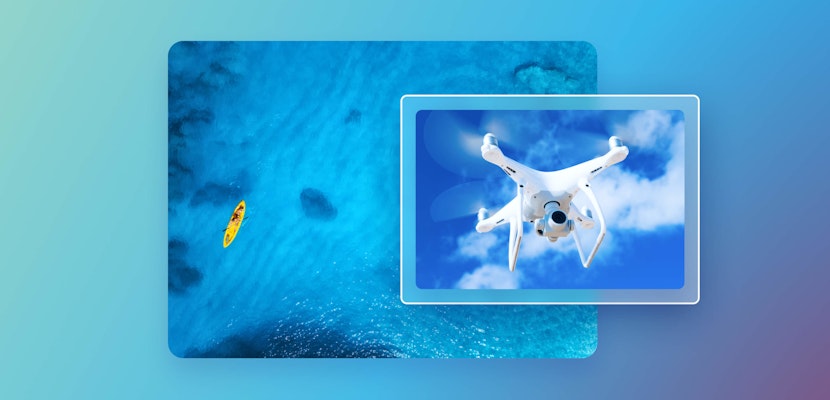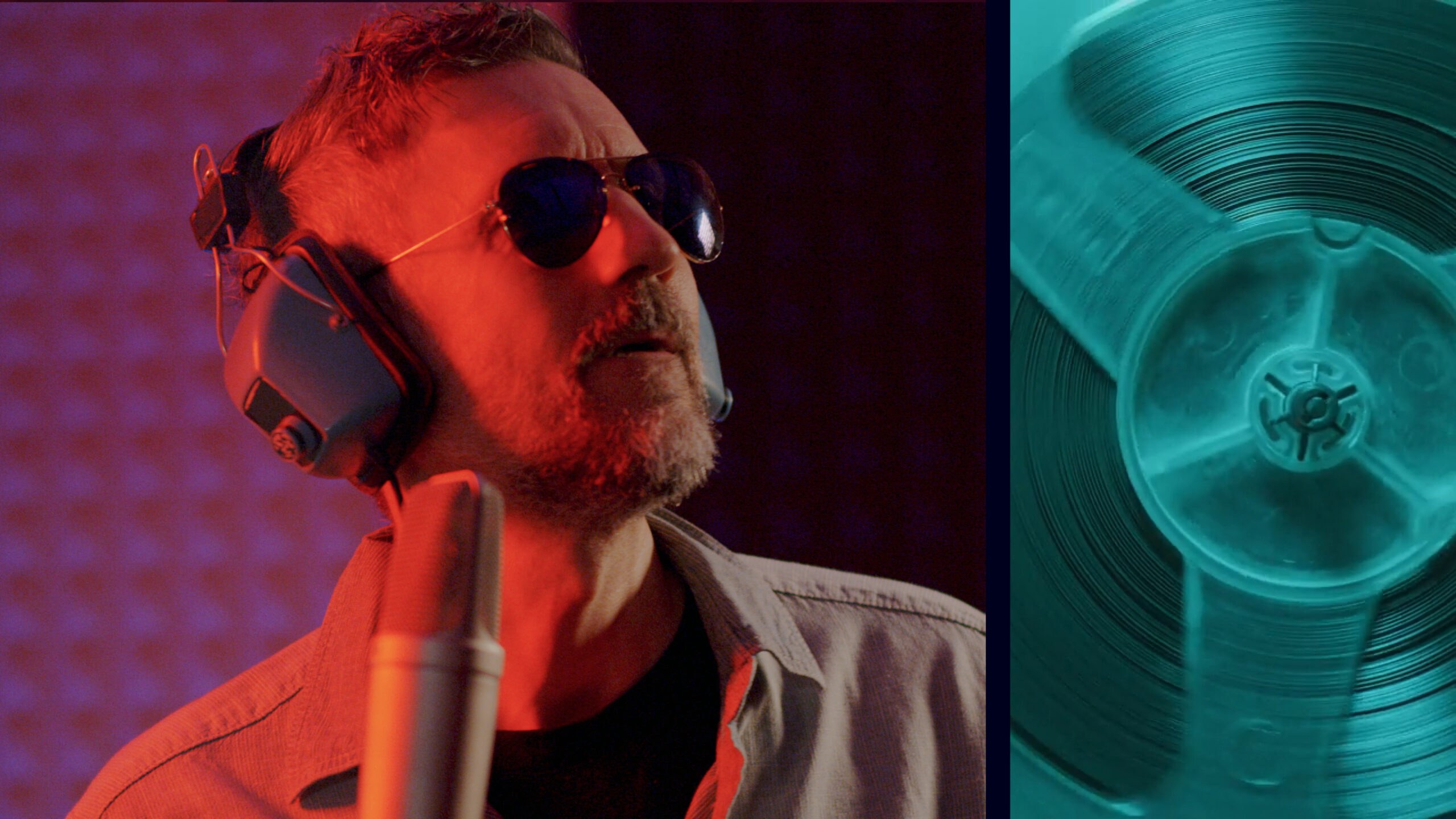Imagine watching your favorite foreign film and feeling completely immersed in the story, thanks to seamless audio dubbing. But what exactly goes into creating those perfect voiceovers?
In this blog post, we’ll explore the world of audio dubbing, covering everything from its definition to the innovative role of AI voiceovers in the industry. Whether you’re a filmmaker, a content creator, or simply curious about dubbing, this guide will equip you with the insights to dive into this essential aspect of video production.
Summary
What is audio dubbing?
Audio dubbing is the process of replacing the original dialogue in a film, television show, or video with a new audio track in a different language or by different voice actors. This translation technique makes content engaging and accessible to a broader audience.
Take, for example, Money Heist, the popular show on Netflix. It was originally created and released in Spanish, however, thanks to audio dubbing, it has become an international success. In fact, when Netflix relaunched Money Heist with its English dub, they saw a significant revenue increase, and the show became its most-watched non-English series.
Money Heist cast introduction in Spanish
Money Heist cast introduction with English dubbing
How is audio dubbing used?
Audio dubbing is super important in a bunch of different areas, making content way more accessible. In film and TV, it lets people around the globe enjoy stories in their own languages, which really helps bring those narratives to life. For video games, dubbing takes immersion to the next level by giving characters localized voices, making it easier for players to connect with the story. Plus, in educational videos, dubbing helps reach a wider audience by breaking down language barriers, ensuring that everyone can grasp the important info being shared.
Dubbing vs. subtitles
While both dubbing and subtitles serve the same purpose of translating content, they do so in different ways. Dubbing replaces the original audio with new voices, while subtitles display translated text on-screen.
Each has its advantages. Dubbing provides a more immersive experience, whereas subtitles can retain the original performance and nuance of the actors’ voices. If you’re interested in adding an extra layer of creativity to your subtitles with animation effects, check out this video.
The process of audio dubbing
The audio dubbing process involves a few steps:
1. Translating scripts
The first step is translating the original script into the desired language. This isn’t just about direct translation; it involves adapting the dialogue to fit cultural nuances and context.
2. Hiring voice actors
Finding the right voice actors is crucial. The voices must match the characters’ personalities and emotions, creating a believable experience for the audience.
3. Recording
Once the scripts are translated and actors are hired, the next step is recording. This can be done in a professional studio to ensure high-quality sound.
4. Syncing
Finally, the new audio must be synced with the visuals. This step is critical to maintaining the flow of the story and ensuring that the characters’ lip movements match the new dialogue.
Challenges in dubbing
Dubbing definitely comes with its fair share of challenges. One major hurdle is making sure that the tone, emotion, and context of the original dialogue stay intact — after all, you want the audience to feel the same vibe as the original.
Cultural references often need to be tweaked or changed, which can make the translation process a bit tricky. It’s essential to account for cultural nuances, as what resonates in one culture might not land the same way in another — working with local experts can help make sure the translation feels authentic. So, while dubbing can open up a world of possibilities, it’s not always easy to do well.
AI voice overs: The future of audio dubbing?
Now you can use Motion Array’s AI voice generator to create your audio track in your desired language without needing to hire voice actors or record. You can already generate voiceovers in English, French, German, Japanese, Portuguese, and Spanish — more languages will be added soon. Some advantages of AI-generated voiceovers for dubbing include:
1. Cost
AI voiceovers can significantly reduce the costs associated with hiring multiple voice actors.
2. Speed
Without the need to find, hire, and record with actors. You can simply drop the text into an AI voiceover generator and create your content much faster.
3. Consistency
It can be easier to create a uniform quality, or style if you use the same AI-generated voices across different projects as opposed to various voice actors.
4. Customization with AI
AI voiceovers are very customizable. Creators can tweak the voices to match specific characters or capture different moods, giving their projects a unique touch that wasn’t possible before. This level of personalization really helps bring stories to life in a way that resonates with audiences.
Practical uses of AI voiceovers in dubbing
Localization made easy
AI voiceovers streamline the localization process, making it easier for creators to reach global audiences. By automating certain aspects of dubbing, AI can help ensure that content is tailored to local cultures and languages without sacrificing quality.
You can even try using live dubbing technology which is great for live streaming, radio, or any live event where you want to reach your audiences in multiple languages at the same time.
Reducing human error
Another advantage of using AI is the reduction of human error. With traditional dubbing, mistakes can happen during recording and syncing. AI technology helps minimize these issues, leading to smoother production and fewer retakes.
Popular tools for dubbing
- Adobe Audition: This professional audio editing tool is perfect for creating high-quality soundscapes. It offers advanced features for mixing, mastering, and restoring audio, making it a go-to for serious creators.
- Audacity: This fantastic free, open-source software is great for beginners and experienced users alike. It provides essential tools for recording, editing, and exporting audio, and its user-friendly interface makes it easy to get started.
- DaVinci Resolve: Known for its robust video editing capabilities, DaVinci Resolve also shines in audio dubbing. It combines video editing with powerful audio tools, allowing you to sync and edit soundtracks seamlessly.
- AI Dub: A great tool for real-time translation and voice generation, AI Dub makes it easy to localize content for global audiences.
These tools offer a range of options for creators at any level, so you can find the right fit for your dubbing projects.
Top tips for audio dubbing
Choose the right voices
Make sure to pick voice actors that really match the characters. This helps keep the authenticity and vibe of the original intact.
Maintain cultural relevance
Don’t forget to tweak the dialogue so it connects with the target audience. A little cultural adaptation can go a long way.
Quality control
Always give your work a solid review. Editing and checking sound quality will make sure everything sounds as great as it can.
Wrapping up
Audio dubbing is such a powerful tool that really opens up a world of creative possibilities for filmmakers and content creators. With cool innovations like Motion Array’s AI voiceover, the future of dubbing is looking super bright. It’s never been easier to share stories that resonate across different languages and cultures, which is awesome for reaching a global audience.
So, if you’re eager to level up your dubbing game and explore all the amazing options out there, why not dive deeper? Learn more about AI voice generators, how to write great voiceover scripts, and the vocal fry technique.




























